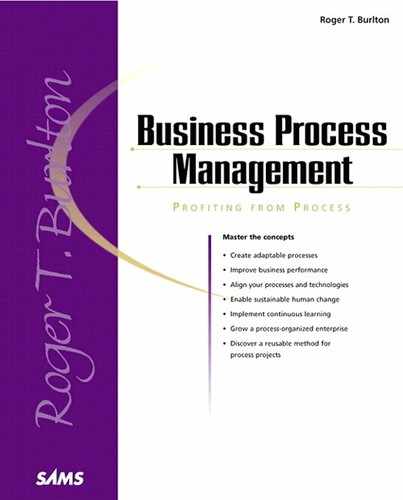Developing an Initial Business Case
This step documents the high-level costs and benefits of the change and shows management that business risk has been evaluated. It’s intended to give managers confidence, so that the project can gain approval to proceed and obtain resource commitment.
Techniques
The techniques of developing an initial business case are the classic ones employed by organizations to justify expenditure of funds and allocation of human resources:
Cost/benefit analysis
Internal proposal preparation
Negotiation
Lessons Learned
Analyze the high-level alternative approaches for potential improvement (a maximum of three), and determine the benefits associated with each alternative based on stakeholder expectations and the value added by the approach; try to quantify these benefits. Then determine the operational costs associated with each alternative. Document any nonquantifiable operational costs and benefits and examine the risks of each alternative. Add the cost of the design, development, and implementation of the solution. Work out the rate of return, cost recovery time, or whatever other decision criteria are used by the organization. Include the cost of doing nothing.
The team should carefully present the pros and cons of each approach as well as recommend one alternative as part of an internal proposal. However, the team should never defend its recommendation, only explain dispassionately. Management—not the team—should always make the final choice.
Be prepared to document and discuss the possible impact of assumptions on the return on investment. For example, would a small change in product quality lead to a huge increase in market share? What would happen if you couldn’t achieve this increase?
Use the standard corporate ratios and mechanisms to prove the worthiness of the project and document the results. It’s competing with other initiatives of all types for funding and management attention.
Tip
In this first presentation early in the project, be sure that everyone knows that this is just the first version of the business case, and that other updates will be provided later when more details are known about the solution. There will be an off-ramp, so the only risk and committed cost at this point are the resources allocated to get to the next review. In later versions, this base case will be updated with more details, specific alternatives, well-defined advantages and disadvantages, comparisons to the evaluation criteria, and overall ranking of alternatives.
Provide confidence limits (+ and – percentages) for the range of estimates of cost and benefit. Later estimates will be significantly more reliable than the initial estimates, which are made before process analysis and redesign.
In the presentations and workshops, use scenarios to help sell emotionally, and the performance evaluation criteria to avoid inappropriate non-personal biases. Use the outsider (that is, stakeholder) perspective to show why the recommended alternatives are appropriate.
Make sure that you know how decisions are really made and who really makes them before heading into working sessions and committee meetings. Do your homework and lobby in advance. This is management’s real shot at making the go/no-go decision, so do lots of pre-selling one-on-one before presentations and executive workshops. Make sure that management makes the decision, or it will never fly. Their commitment is required.
Anticipate objections and be ready to deal with each. Prepare for lots of opposition and hope you don’t get much.
